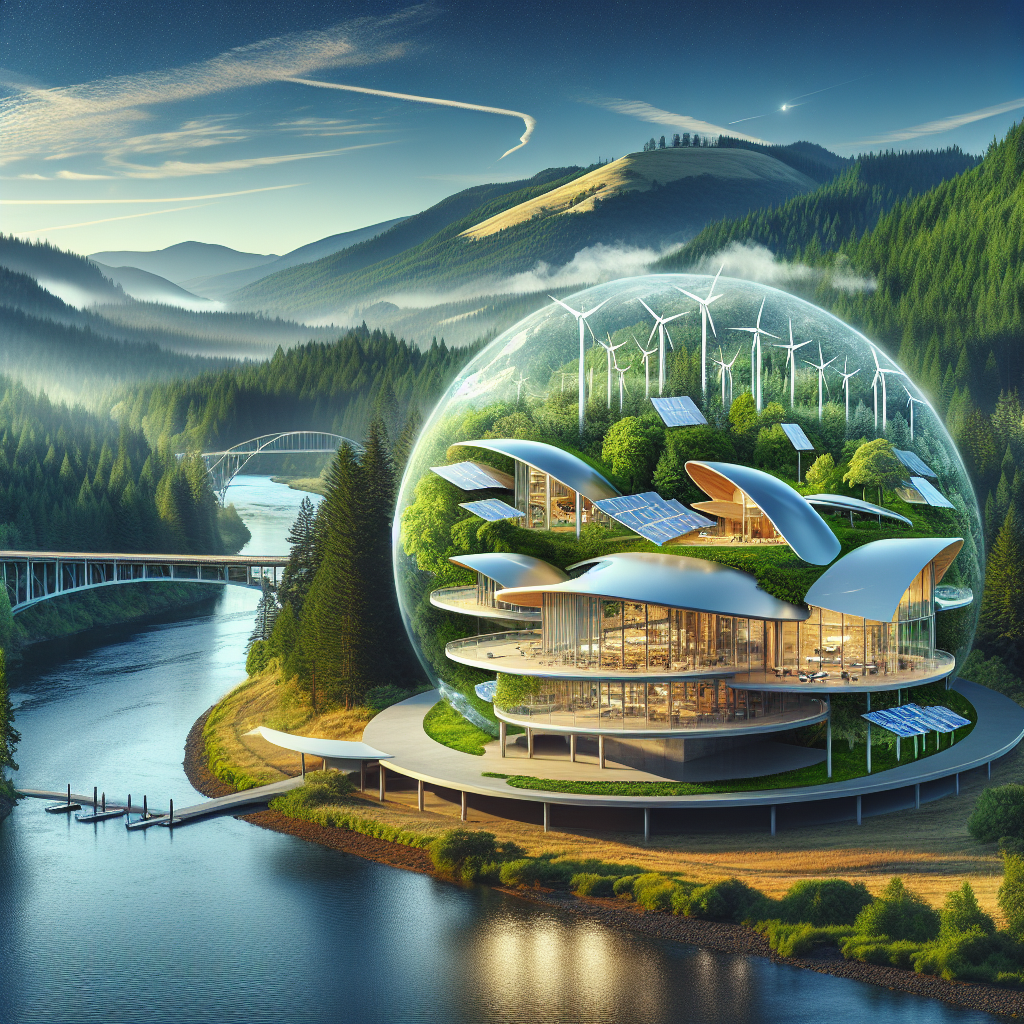A Green Revolution in the Land of the Pioneers
In the evergreen state of Oregon, where the majestic Cascades meet the rugged coastline and the smell of high desert sagebrush is ever-present, a revolution is underway. Not a revolution of protesting voices or picket signs, but rather a peaceful revolution of bricks and mortar, bamboo, and repurposed materials. This revolution, dear reader, is all about sustainable architecture, and it’s reshaping the way we think about buildings, not just here in Oregon, but across the world.
Engaging with Ecoroofs in The City of Roses
Portland, affectionately known as “Stump Town” or “The City of Roses”, is an urban trailblazer in sustainable architecture. It’s not unusual to find a “green roof” or “ecoroof” atop Portland’s modern buildings. These aren’t roofs that have been painted green, mind you, but full-on gardens acting as rooftop insulation. Talk about literal green thumbs!
An excellent example of this is at the humble Fire Station 12, located in the St Johns neighborhood. The station’s ecoroof, brimming with locally sourced plants, reduces stormwater runoff, improves air quality and encourages local wildlife. Firefighters have even reported the occasional visit from the neighborhood’s resident hummingbirds.

Bend’s Booming Bio-Based Buildings
Heading east through Mt. Hood territory, cross the desertic landscapes of Dry Canyon, and into Bend—the outdoor playground of Oregon—locals are deeply committed to sustainable living. Here you find The Environmental Center, a delightful, repurposed church that has become a hub for all things eco-friendly. The Center boasts a plethora of salvaged materials and a state-of-the-art bio-swale that catches rainwater and uses it to irrigate the surrounding gardens. Oh, and did I mention it’s one of the first LEED Platinum public buildings in the country? Talk about leading by example!
The Oregon Health & Science University’s Golden Standard
Now let’s scoot back towards the Willamette Valley—Oregon’s breadbasket and home to some of the world’s finest Pinot Noir. In the bougainvillea-lined hills of Portland sits the Oregon Health & Science University’s Center for Health and Healing. It’s not just a mouthful to say but also one of the nation’s most iconic examples of sustainable architecture. The center, A.K.A. OHSU to locals, pilfers not one iota of Portland’s precious rainwater. Instead, it captures and repurposes it throughout the building. Now that’s what I call making good use of Oregon’s liquid sunshine!
Furthermore, the building’s skin—don’t think flannel and Carhartt, we’re talking architectural skin here—is made of efficient glass that maximizes natural light and insulation, a must-have for those chilly Rose City winters.
Living Sustainably in Silverton
Travel south to the quaint town of Silverton, a stone’s throw from Silver Falls State Park—beautiful waterfalls, by the way—and you’ll find Abiqua Heights, an eco-conscious residential area. The local architectural firm, Opsis, planned the community with a deep respect for the surrounding natural beauty. Remember the golden rule of sustainability – reuse, reduce, recycle? Well, they took it to heart by recycling household water for irrigation and incorporating recycled materials into the home designs.
A Toast to the Green Future in the Beaver State
In Oregon, where mountains wear caps of snow and valleys are cloaked with dense firs, our tides are turning towards a greener, more sustainable existence. From rooftop gardens and repurposed rainwater to sustainable communities and bio-based buildings, we’re embracing natural resources and leaning into a future defined by harmony with Mother Nature.
So, let’s toast with a locally brewed IPA, or perhaps a delightful Willamette Valley Pinot Gris, to the green revolution brewing right here in the Beaver state. And why not explore it for yourself? After all, firsthand experience is the Oregonian way—just don’t forget your rain gear and recycling bin!
